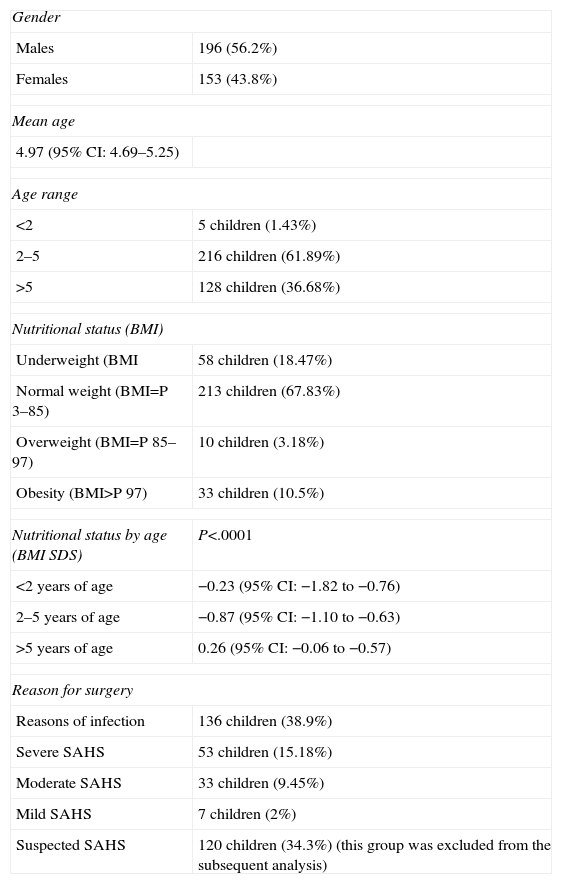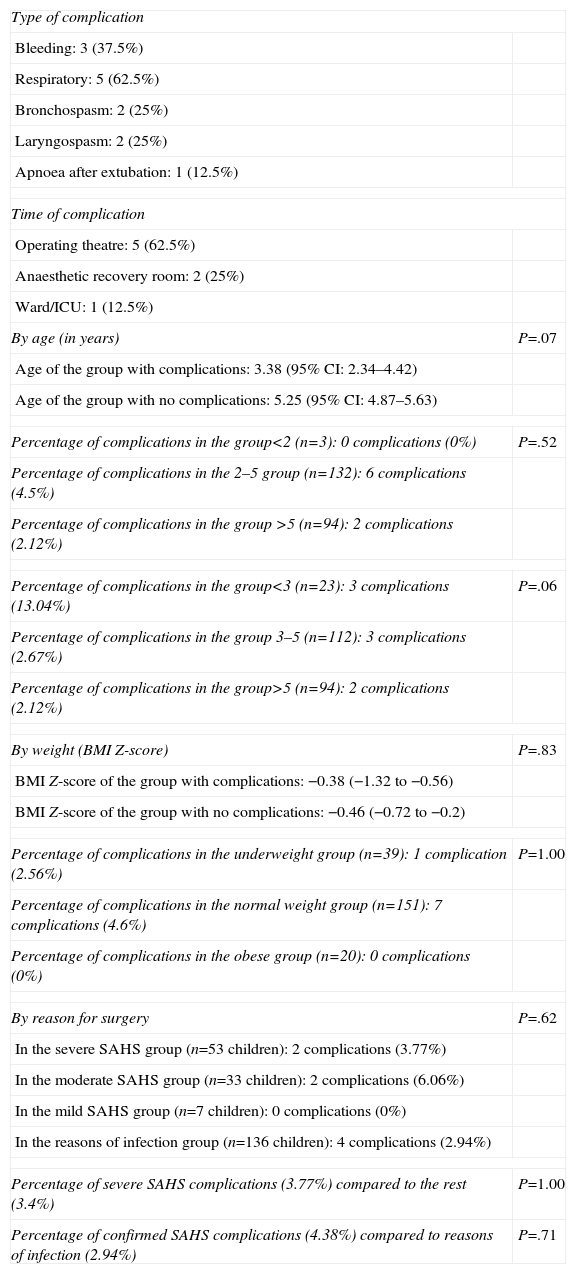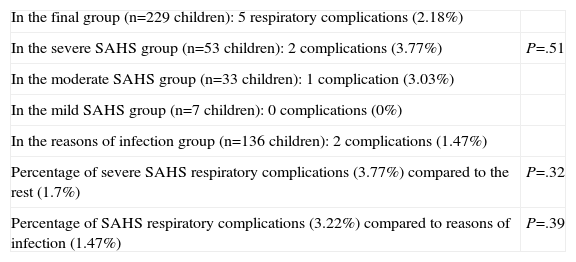In recent years, with the rise of sleep-disordered breathing, we have been seeing more articles related to post-operative complications after adenotonsillectomy in children with sleep apnea-hypopnea syndrome (OSAS), especially in those with severe sleep apnea. The objective of this study was to evaluate post-operative complications in children with severe OSAS compared to children who had adenotonsillectomy for a different reason, and establish whether they needed admission to an intensive care unit or not.
MethodsAll children undergoing adenotonsillectomy in our hospital in the last 5 years were initially included in this study. Complications were analysed with a retrospective review.
ResultsTwo hundred and twenty-nine children admitted for adenotonsillectomy were finally included. In the whole group, complications occurred in 3.5% of children, 2.2% corresponding to respiratory complications. Children with sleep apnea (3.23% vs 1.47%, P=.39) or severe sleep apnea (3.77% vs 1.70%, P=.32) presented a higher incidence of respiratory complications, which was not statistically significant and was far below those published by other authors. All respiratory complications took place in the immediate post-operative period (operating theatre or anaesthesia recovery), with none in the paediatric ward.
ConclusionsIn our population, children who undergo adenotonsillectomy, without any other comorbidities, malformation syndrome or neuromuscular disease, are more than 2 years old and have an immediate postoperative period without incidence, do not need to be systematically admitted to an intensive care unit, even if they present with severe OSAS.
En los últimos años, con el auge de la enfermedad del sueño, están surgiendo publicaciones relacionadas con las complicaciones postoperatorias de la adenoamigdalectomía en niños con síndrome de apnea-hipopnea del sueño (SAHS), especialmente en aquellos con un grado severo. El objetivo del estudio fue evaluar las complicaciones postoperatorias de los niños con SAHS severo comparado con aquellos niños en los que se ha realizado la misma intervención, pero por diferente motivo, y establecer si precisan cursar el postoperatorio en una unidad de cuidados intensivos.
MétodosEstudio retrospectivo en el que se han incluido todos los niños adenoamigdalectomizados en nuestro hospital en los últimos 5 años y se han analizado las complicaciones presentadas.
ResultadosDoscientos veintinueve niños de los intervenidos en ese periodo fueron finalmente analizados, de los cuales solo 8 niños han presentado algún tipo de complicación (3,5%), siendo el riesgo de complicaciones respiratorias del 2,2%. Comparando el porcentaje de complicaciones respiratorias en el grupo de SAHS (3,22% frente a 1,47%, p=0,39) o en el subgrupo de SAHS severo (3,77% frente a 1,70%, p=0,32) con respecto al resto, se encuentra ligeramente elevado, pero sin diferencias estadísticamente significativas y muy inferiores a lo publicado por otros autores. Además todas las complicaciones respiratorias se presentaron en el postoperatorio inmediato (quirófano y recuperación) y ninguna en planta.
ConclusionesEn nuestra población la realización de una adenoamigdalectomía (si el paciente no presenta ningún síndrome malformativo o enfermedad neuromuscular, tiene más de 2 años y el postoperatorio inmediato ha transcurrido sin incidencias) no implica complicaciones significativas a posteriori, y el paciente puede ser ingresado en planta y no en una unidad de cuidados intensivos, independientemente de que el motivo de la cirugía sea un SAHS severo.








